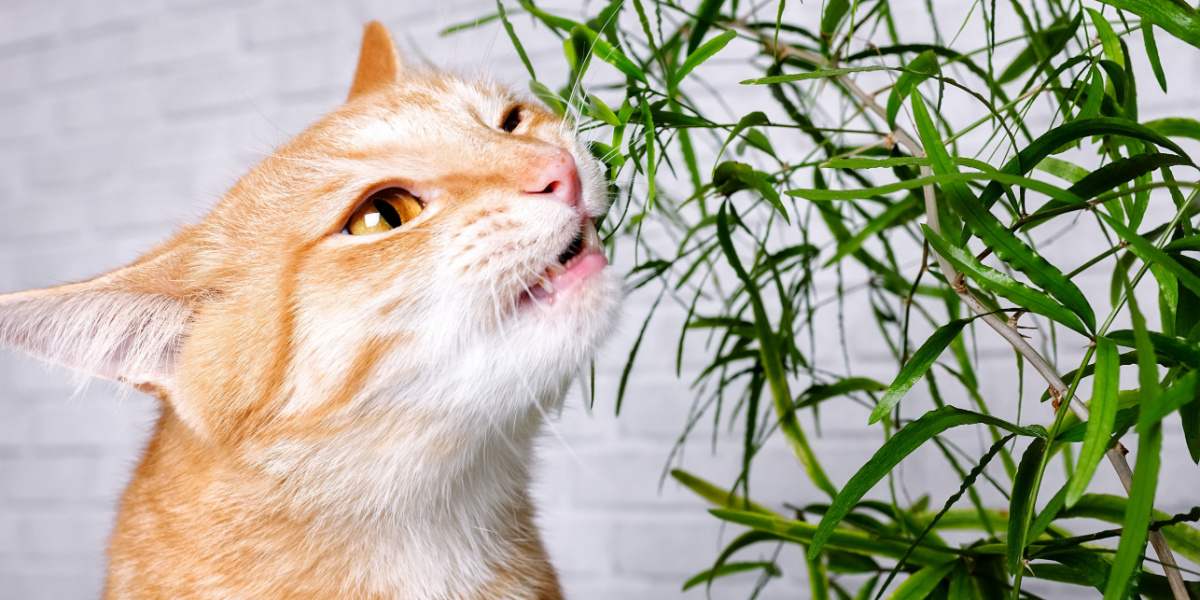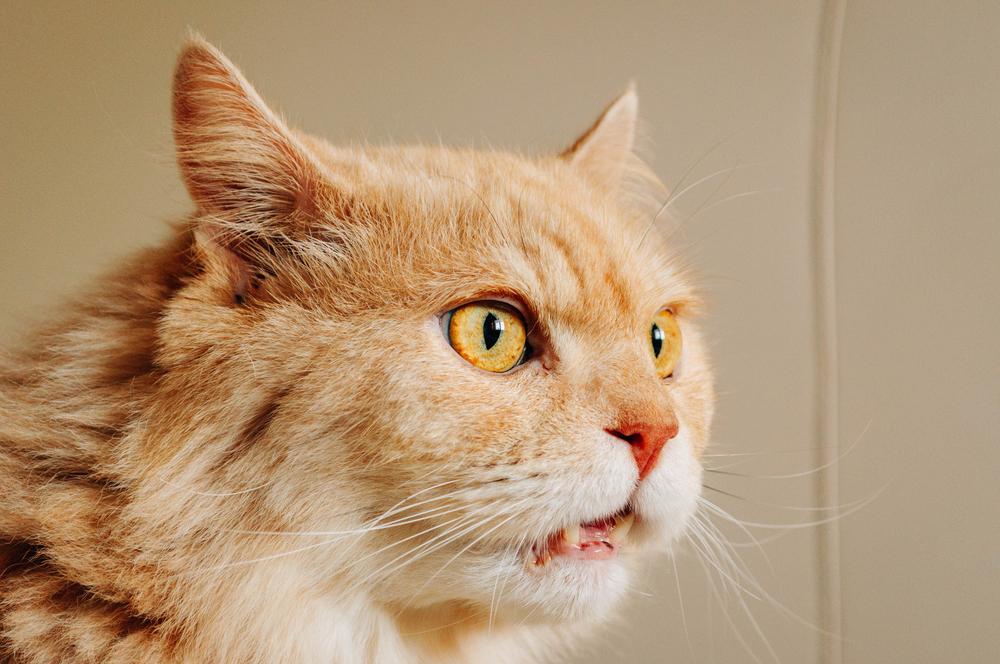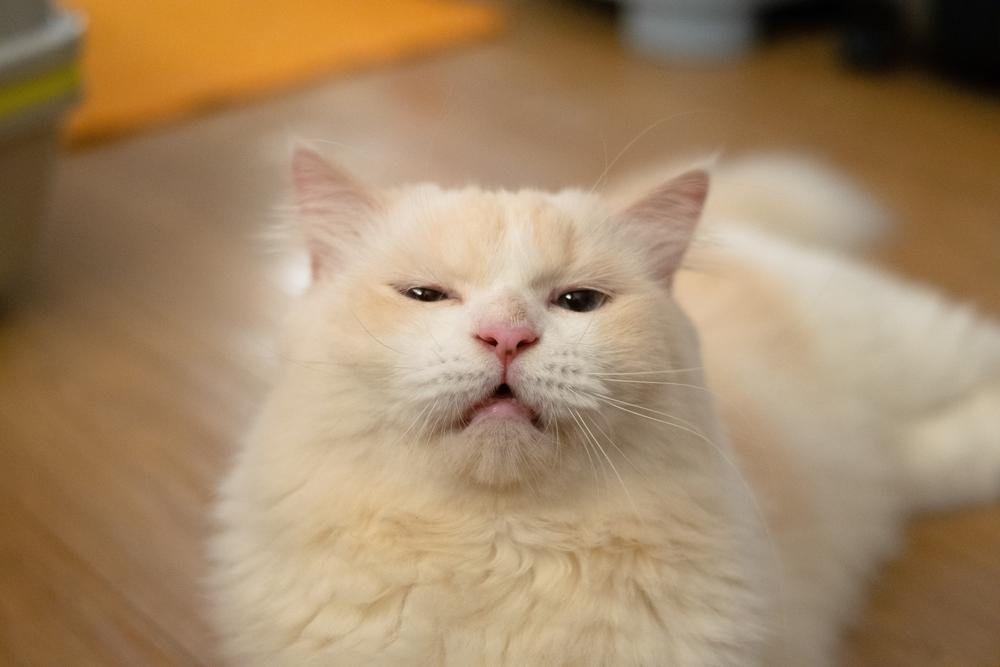
Cats have an incredible sense of smell that’s far superior to humans. They use scent as an important method of communication, and that involves using pheromones (chemical messages), as well as usual smells.
Cats are well developed to process any new interesting scent, as they use both their nose and a special technique called the flehmen response. This open-mouthed trick is a cat’s way of drawing scent into a special organ, allowing for highly specific processing of sensory information, but it can look very odd to cat owners.
Key Takeaways
Cats have an excellent sense of smell, both through normal olfactory scent receptors but also using pheromones.
Cats interpret pheromones using their vomeronasal organ, a series of ducts and receptors located on the roof of the mouth.
The flehmen response is the odd grimace expression that cats make in order to draw scent in and up to the roof of the mouth into this scent organ.
Let’s learn more about a cat’s sense of smell and why cats open their mouths when they smell particularly interesting scent.
Why Does Your Cat Leave Its Mouth Open While Sniffing?
A cat’s nose has almost 40 times as many sensory cells in their nasal cavity compared to a human’s nose. These receptors are all used to pick up on scents, from the mild to the overpowering.
Cats use scent in many ways: to navigate the world around them, as well as to communicate with another cat, as well as people. Having an excellent sense of smell is also useful when you are a stealthy predator in the dim light of dawn and dusk.
However, cats also have a secret weapon when it comes to smells. They have a second “nose.” This special piece of equipment is called the Jacobson’s organ, or vomeronasal organ, and is located on the roof of the mouth.
You might be able to see it as a small bump if your cat holds their mouth wide open for you. Made up of tiny ducts that lead to the mouth and the nose, and containing thousands of specialized receptors, its role is to process pheromones (chemical scent messages). The Jacobson’s organ was discovered in 1811 by Danish scientist Ludvig Levin Jacobson.
How Do Cats Use Pheromones to Communicate?

Cats have scent glands on several parts of their body, including the face and paws.
Pheromones are olfactory chemicals, released by special scent glands around the body and used by cats to communicate, both with themselves and with other cats. All feline species, including big cats, release pheromones, and they play a large role in cat behavior and communication.
The scent glands are situated around the body, including the face, paw pads, and around the nipples of female cats. Cats release pheromones by actions such as rubbing or bumping heads and bodies, scratching, and urine spraying.
Different pheromones communicate different meanings. They are used to create social bonds and familiarity, mark territory, signal to sexual partners, identify other cats, strengthen the mother-and-kitten bond, show happiness and contentment, or signal fear and stress. All cats can understand pheromone messages.
What Is the Flehmen Response in Cats?
When a cat is concentrating deeply on a particular scent, they use a reaction called the flehmen response. This is where they have their mouth held slightly open, with their upper lip curled, often described as a grimace or sneering expression. Flehmen is from a German word, meaning “lip curl.”
The result of this odd expression is the maximum exposure of the Jacobson’s organ on the roof of their mouths to the pheromones. The tongue catches the scent, and flicks the pheromone messages up to the ducts, allowing receptors in the vomeronasal organ to process the scent messages.
This odd mouth-breathing approach to scent is most often seen in male cats, likely due to their use of pheromones to sniff out potential sexual partners. You might also see this amusing expression in cats investigating novel or interesting scents such as if another cat has sprayed urine nearby, on scratch marks from another feline, or in secretions such as anal glands or feces. Which is why cats make weird faces when they smell something.
In addition to cats, the flehmen response is seen in horses, giraffes, elephants, goats, and rhinos.
Do I Need To Be Concerned?

Don’t confuse the flehmen response with panting or difficulty breathing, which is a medical emergency.
A cat’s flehmen response has been described as “stinky face” due to the grimace expression, and it can lead cat owners to be concerned that their pet is in pain or unwell. However, this is a perfectly normal behavior—it’s just a cat’s way of thoroughly investigating important scent messages.
It should not, however, be confused with mouth breathing. When performing the flehmen reaction, a cat will stand still, with their upper lip curled and mouth slightly open. It only lasts for a short time.
Also Read: Do Cats Have Scent Glands In Their Paws?
If, however, your cat is panting with its mouth open, breathing with more effort (tummy or chest sucking in and out), or having difficulty in breathing, seek veterinary attention immediately.
Cats have super scenting powers, with an excellent sense of olfactory smell and the ability to sniff out pheromonal messages.
Frequently Asked Questions
Do cats open their mouth when they smell something bad?
Cats use a special way of smelling called the flehmen response, where they open their mouth and curl their lips into a grimace. This is a response to smelling pheromones (chemical messages) rather than a bad scent, but is easily confused as the action is often performed around urine or anal gland secretions.
Why do cats pull a funny face when they smell something?
Cats have a vomeronasal organ on the roof of their mouths. They use this to smell pheromonal messages. When they smell something interesting, they make a funny grimace expression to draw scent into their mouths and up into this scent organ.
Why do cats stick their tongue out after smelling something?
Cats have a vomeronasal organ on the roof of their mouths, which is involved in pheromone messaging. They use their tongues to draw scents in and flick them up onto the roof of the mouth and into the ducts of the scent organ. This is called the flehmen response.
Why do cats like it when you rub their cheeks?
Cats have scent glands all over the face which release pheromones, including their cheeks. Pheromones can convey different messages but facial pheromones are involved in feelings of happiness, contentment, and social bonding.







